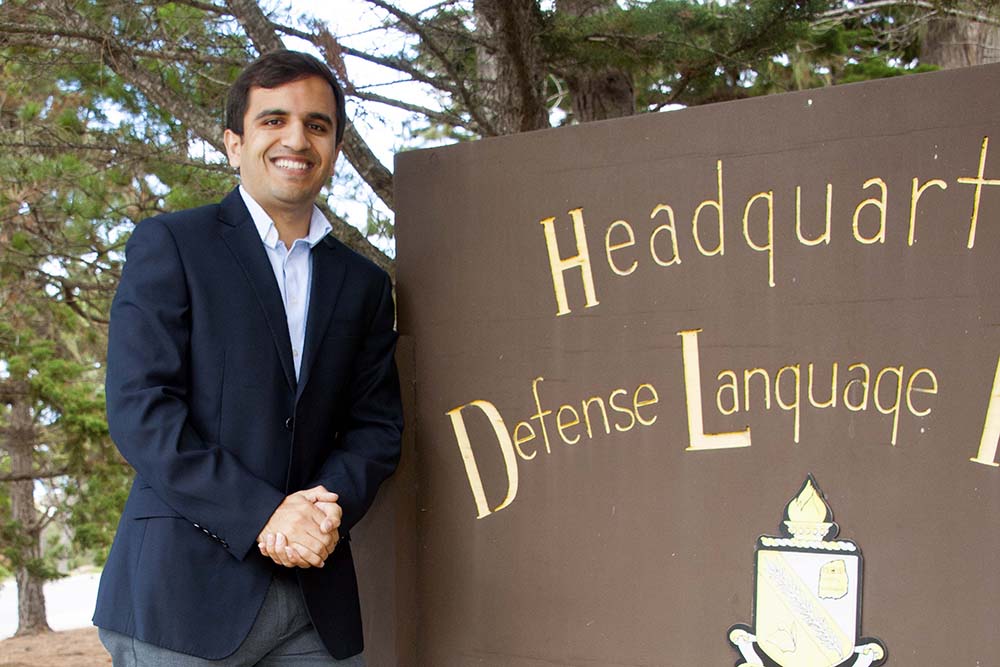By Natela Cutter
DLIFLC Public Affairs
Image may be NSFW.
Clik here to view. MONTEREY, Calif. – Everyone at the Defense Language Institute Foreign Language Center knows that the Commandant’s preferred venue of interaction with faculty, staff and students is face-to-face, normally conducted through Town Halls, or on his well-known weekly d to the school houses.
MONTEREY, Calif. – Everyone at the Defense Language Institute Foreign Language Center knows that the Commandant’s preferred venue of interaction with faculty, staff and students is face-to-face, normally conducted through Town Halls, or on his well-known weekly d to the school houses.
On most occasions during the Town Halls, Col. Phil Deppert, DLIFLC Commandant, will ask the assembled group “what are we for?,” normally eliciting a loud answer by the audience – “for the students!,” in reference to more than 2,500 military service members who learn one of the 17 foreign languages taught at DLIFLC.
Today, however, Deppert turns to the first row in the auditorium, spots a dark-eyed young man and hollers, “Aziz, come up here and tell the faculty and staff what you are for!”
“I am for the faculty Sir,” says Aziz Popal, a confident-looking young man in his early 30s, well dressed and sporting a brilliant white smile. Popal is the new Academic Senate president who turned the organization around over the past year into a model of shared governance between faculty, staff, and the Institute leadership.
In 2016, Deppert directed a review of shared governance, to analyze the extent to which DLIFLC groups were fulfilling their stated purpose and mission, with the intent of creating a clear pathway for faculty and staff members to have their voices heard in the Institute’s decision-making processes.
“Shared governance has been reenergized,” said Popal, in an interview, explaining that these efforts had fallen by the way side in recent years and that the Academic Senate and Faculty Advisory Councils had lost their luster for participants throughout DLIFLC’s eight schools and directorates, with faculty and staff numbering around 1,650.
“The Faculty Advisory Council and Academic Senate are the primary organizations through which the faculty engages in shared governance and they represent the collective voice of the faculty,” explained Popal. “Our board first realized that the bylaws needed to be redone, and we asked each and every Faculty Advisory Council member for input. We strongly communicated that all (faculty members) are welcome (to participate)….. (and that it is) open to everybody.”
With a new set of bylaws and a reenergized base, Popal says that some of the first accomplishments include sitting at the table with leadership at important decision-making meetings. Members participated in the 2022 Tiger Teams that were created by the Commandant to assess if DLIFLC would be ready for the challenges coming its way in the future.
Popal himself participates in every Town Hall, where the Commandant calls upon him to speak to faculty and staff, to explain his work and the roles of the two organizations.
“We currently have Col. Deppert visiting the FACs, a completely new initiative, and he is taking the same message of shared governance with him to every school. This sends a message about how much DLI is paying attention to the issue of shared governance,” said Popal.
Popal says that the next move of the Academic Senate will be to ensure representation in the two bodies is provided at DLIFLC Language Training Detachments, at 23 locations beyond Monterey, where faculty and staff members can number from two to three, up to 25 and more. Another initiative includes visiting local universities to share best practices and ideas for improvement.
“If someone is heard in the process, I think shared governance is being achieved. The fact that we are being heard is what gives us the power to help the decision makers make an informed decision, “said Popal, referring to his organization’s role to inform DLIFLC leadership about faculty and staff opinions regarding issues that can pertain to curriculum, organization of schools or variety of other academic issues.
DLIFLC provides resident instruction in 17 languages at the Presidio of Monterey, California, with the capacity to instruct another 65 languages in Washington, D.C. The Institute has graduated more than 220,000 linguists since 1941.
In addition, multiple language training detachments exists at sites in the U.S., Europe, Hawaii and Korea, spanning all the U.S. geographic combatant commands in support of the total force.